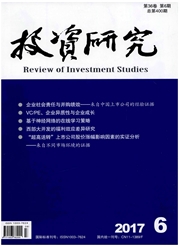

 中文摘要:
中文摘要:
本文通过提取基本因素的形式构造中国需求、国外供需压力、全球流动性、金融投机和美元汇率5个解释变量,结合因子增广型向量自回归模型(FAVAR)和时变参数因子增广型向量自回归模型(TVP-FAVAR)分析2000-2015年的油价波动。结果发现:2000-2008年,油价的攀升主要是由于新兴经济体高速发展引起的供需压力增加;投机行为和全球流动性在2009-2011年油价的上涨中发挥重要作用,但是在2012年以后其影响逐渐减弱。全球原油产量大幅增加和美元汇率走高是造成2014年下半年以来油价加速下跌的主要原因。过去15年中,中国国内的实体经济需求并不构成原油价格波动的主因,但中国需求对油价的影响正逐渐上升。
 英文摘要:
英文摘要:
This paper constructs demand from China、overseas markets supply and demand factor、global liquidity、financial speculation and USA exchange rate by extracting basic factors, and employs FAVAR and TVP-FAVAR model to examine what is driving crude oil price fluctuation from 2000 to 2015. The result shows that: the oil boom during 2000-2008 is mainly due to the increase of supply and demand pressure caused by rapid development of emerging economies; a substantial increase in global crude oil production and appreciation of US dollar since the second half of 2014 caused the main reason to accelerate the decline of oil prices.The substantial economy demand of China does not make the dominant factor affecting the oil price run during 2000-2015, but this effect on oil price has been enhanced recent years.
 同期刊论文项目
同期刊论文项目
 同项目期刊论文
同项目期刊论文
 期刊信息
期刊信息
